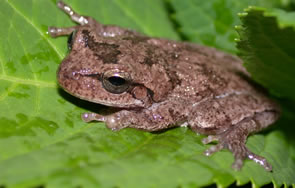
Hyla femoralis
Photo by JD Willson
Description: The pine woods treefrog is usually reddish brown, brownish or grayish (occasionally greenish) with dark blotches on its back and small yellow, orange or white spots on the rear of each thigh.
Habitats and Habits: Pine woods treefrogs inhabit pine forests and flatwoods, as well as cypress swamps in the Coastal Plain. They are noted for climbing to the tops of the tallest trees. Breeding occurs in grassy pools, roadside ditches, cypress ponds and other temporary aquatic habitats. Egg masses are loose and sticky and are attached to vegetation at or near the water’s surface. Tadpoles hatch within three days after eggs are laid and transform in seven to 11 weeks.
Call: Pine woods treefrogs call from March to October. Singing males call from the edge of shallow water or from emergent vegetation with a very distinctive, machine-like “kek-kek-kek” call, which is sometimes described as sounding like Morse code.
Frog Fact: Like many species of amphibians that use ephemeral breeding sites, pine woods treefrog tadpoles may fail to reach metamorphosis if the wetland dries prematurely. Fortunately, large numbers of tadpoles often complete metamorphosis during wet years, which can help make up for the losses sustained during dry years.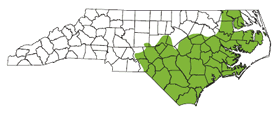
The shaded region represents the range of the pine woods treefrog in North Carolina.
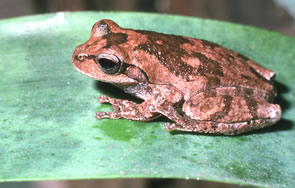
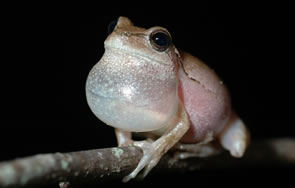
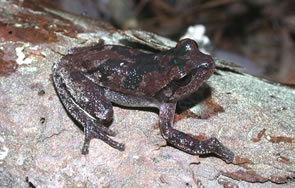
A pine woods treefrog calling.
Photo
by Tom Luhring
Photo by JD Willson
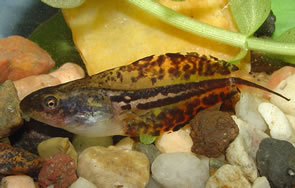
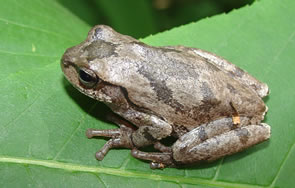
Photo by Aubrey Heupel
This website created by: Grant Connette and Evan Eskew.
For comments or questions contact M. Dorcas: midorcas@davidson.edu.
M. Dorcas homepage: http://bio.davidson.edu/dorcas
Davidson College, Davidson, North Carolina 28035-1719.
Text and maps from: Dorcas, M. E., S. J. Price, J. C Beane, and S. S. Cross. 2007. The Frogs and Toads of North Carolina. North Carolina Wildlife Resources Commission, Raleigh, NC. – Copyright by Michael E. Dorcas
Partial Funding for this website provided by a Associate Colleges of the South, National Science Foundation, and Duke Energy.
